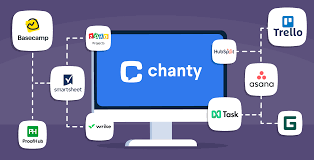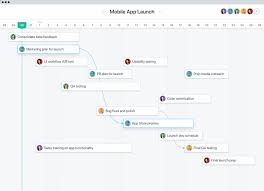Maximising Efficiency: The Essential Project Management Tool Guide
The Power of Project Management Tools
Project management is a critical aspect of any business or organisation. It involves planning, organising, and executing tasks to achieve specific goals within a set timeframe. To streamline this process and enhance efficiency, project managers often rely on project management tools.
Project management tools are software applications designed to help teams collaborate, manage resources, track progress, and meet deadlines effectively. These tools offer a range of features that simplify complex projects and enable seamless communication among team members.
Key Benefits of Project Management Tools:
- Task Organisation: Project management tools allow users to create tasks, assign them to team members, set deadlines, and track progress in real-time.
- Resource Management: These tools help in allocating resources efficiently, ensuring that team members have the necessary tools and information to complete their tasks.
- Collaboration: Project management tools facilitate collaboration by providing a centralised platform for team communication, file sharing, and feedback exchange.
- Time Tracking: Users can monitor the time spent on each task or project, helping in better time management and resource allocation.
- Reporting and Analytics: Project management tools generate reports and analytics that offer insights into project performance, allowing managers to make data-driven decisions.
Popular Project Management Tools:
There are numerous project management tools available in the market catering to different needs and preferences. Some popular options include:
- Trello: A visual collaboration tool that organises projects into boards for easy task tracking.
- Asana: A comprehensive project management tool with features for task assignment, deadline setting, and team communication.
- Jira: Ideal for software development projects, Jira offers advanced issue tracking capabilities and agile project management features.
- Microsoft Project: A powerful tool for planning projects, managing resources, and tracking progress using Gantt charts and other visual aids.
In conclusion, project management tools play a vital role in enhancing productivity, streamlining workflows, and ensuring successful project completion. By leveraging the features offered by these tools, organisations can achieve greater efficiency in their operations and deliver high-quality results consistently.
Maximising Project Management Efficiency: Five Essential Tips for Selecting and Utilising the Right Project Tool
- Clearly define project goals and objectives before using any project tool.
- Choose a project tool that suits the specific needs and requirements of your project.
- Ensure team members are properly trained on how to use the chosen project tool effectively.
- Regularly update and track progress using the project tool to stay on schedule.
- Utilize collaboration features of the project tool to enhance communication and teamwork.
Clearly define project goals and objectives before using any project tool.
Before utilising any project management tool, it is crucial to clearly define the goals and objectives of the project. Setting clear and specific goals from the outset provides a roadmap for the team, ensuring that everyone is aligned towards a common purpose. By establishing precise objectives, project managers can select the most appropriate tools that align with the project’s requirements and desired outcomes. Clarity in goal-setting not only enhances the effectiveness of project management tools but also contributes to better decision-making, resource allocation, and overall project success.
Choose a project tool that suits the specific needs and requirements of your project.
When selecting a project management tool, it is crucial to choose one that aligns with the specific needs and requirements of your project. Each project is unique, with varying complexities, team sizes, and goals. By carefully assessing your project’s characteristics and objectives, you can identify a tool that offers the features and functionalities necessary for successful execution. Tailoring your choice of project tool to suit your project’s specific demands ensures optimal efficiency, collaboration, and ultimately, project success.
Ensure team members are properly trained on how to use the chosen project tool effectively.
To maximise the benefits of a project management tool, it is essential to ensure that all team members are adequately trained on how to utilise the chosen tool effectively. Providing comprehensive training sessions and resources can empower team members to navigate the tool’s features, collaborate seamlessly, and optimise their workflow. By investing in proper training, organisations can enhance productivity, streamline communication, and ultimately achieve project success through proficient use of the project management tool.
Regularly update and track progress using the project tool to stay on schedule.
To ensure project success and adherence to timelines, it is essential to regularly update and track progress using the project tool. By consistently monitoring the status of tasks, assigning new deadlines, and adjusting resources as needed, teams can stay on schedule and address any potential delays proactively. This practice not only fosters accountability among team members but also provides valuable insights into project performance, enabling managers to make informed decisions and keep the project on track towards successful completion.
Utilize collaboration features of the project tool to enhance communication and teamwork.
To maximise the effectiveness of your project management efforts, make full use of the collaboration features offered by your chosen project tool. By leveraging these features, you can significantly improve communication among team members and foster a sense of teamwork and cohesion. Encouraging collaboration through shared tasks, real-time updates, and interactive discussions within the project tool can enhance productivity, streamline decision-making processes, and ultimately lead to the successful completion of projects within set deadlines.




